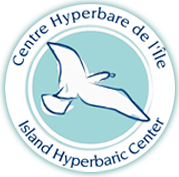Preconditioning and Post-operative Healing with HBOT
Preconditioning and Post-operative Healing with HBOT
Optimizing Hyperbaric Oxygen Therapy (HBOT) for pre-surgical preparation and postoperative healing involves specific protocols that vary depending on the type of surgery and the patient’s condition. Here are some general guidelines and considerations for using HBOT in these settings:
Pre-surgical Preparation (Preconditioning)
1. Timing and Frequency: HBOT sessions are typically started a few days in the case of an otherwise healthy person to weeks in the case of an individual with a compromised vasculature (ie a radiation) patient before the surgery. The goal is to enhance tissue oxygenation and vascularization, which can improve surgical outcomes and reduce complications.
2. Pressure and Duration: Treatments are often conducted at pressures between 2.0 to 2.5 ATA (atmospheres absolute) for about 60-90 minutes per session. The number of sessions can vary based on the specific goals of preconditioning, such as reducing inflammation or enhancing tissue viability.
Postoperative Healing
1. Early Initiation: Starting HBOT as soon as possible after surgery can be crucial, especially for surgeries involving areas with compromised blood supply or high risks of infection. Early HBOT can help reduce edema support immune function, and accelerate wound healing.
2. Protocol Specificity: Postoperative HBOT protocols may vary based on the type of surgery. For example, in cases of abdominal surgeries or where there is a risk of anastomotic complications, HBOT might be used to enhance healing and reduce the risk of leaks or other complications.
3. Frequency and Duration: Postoperative HBOT typically involves daily sessions for the first few days post-surgery, followed by sessions that may taper off as healing progresses. Each session usually lasts about 90 minutes at pressures of 2.0 to 2.5 ATA.
Combined Pre and Postoperative HBOT
1. Integrated Approach: For some conditions, a combined preoperative and postoperative HBOT protocol may be beneficial. This approach aims to maximize tissue readiness before surgery and support rapid recovery afterward.
2. Customization Based on Surgery Type: The specifics of the HBOT protocol, such as the number of sessions and the duration of each session, should be tailored to the type of surgery and the individual patient’s needs.
Monitoring and Adjustment
– Clinical Assessment: Continuous monitoring of the patient’s response to HBOT is essential. Adjustments to the protocol may be necessary based on the patient’s healing progress and any complications.
– Collaboration: Coordination with the surgical team is crucial to integrate HBOT effectively into the overall treatment plan.
These protocols are designed to leverage the benefits of increased oxygen availability to improve surgical outcomes, reduce complications, and accelerate healing.
